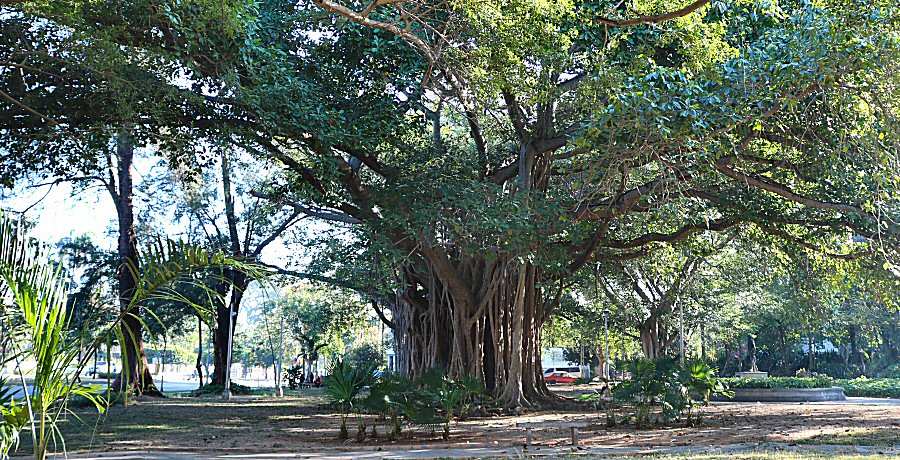
The Parque Emiliano Zapata is located on the 5th Avenue, between the 25th and 26th streets in Miramar.


The 5th Avenue divides a green area
between the 24th and the 26 streets in the diplomatic district
of Miramar, creating twin parks. The part on the north is called
the Parque de los Ahorcados (Park of the Hanged) or just Miramar
park, whereas the part to the south is called the Parque
Emiliano Zapata (1879-1919), build to pay tribute to the Mexican
staunch defender of the independence of the country, the rights
of Mexican Indians and the land reform.
The Parque Emiliano
Zapata, one of the oldest and most charming parks in Havana, is
named after the monument of the general that was erected in the
center of the park in 1964. The current sculpture is that one
that replaced the previous one in 2011 on the occasion of the
centenary of the beginning of the Mexican Revolution. The
Mexican hero is represented in the authentic dress, standing on
a rectangular concrete pedestal, with a big characteristic
Mexican hat on his right hand and a saber on his left hand.
Double bandoliers are slung over his chest. There is a shield on
his pedestal, informing that the sculpture was donated by the
government of Mexico to the people of Cuba. The sculpture is the
work of the Mexican sculptor Germán Michel Leal. People that
were concerned with Zapata should not miss to visit the Casa de
Benito Juárez in Old Havana to see the portable mural painting
Traición y Muerte de Zapata (Treason and Death of Zapata) by
Arnold Belkin.